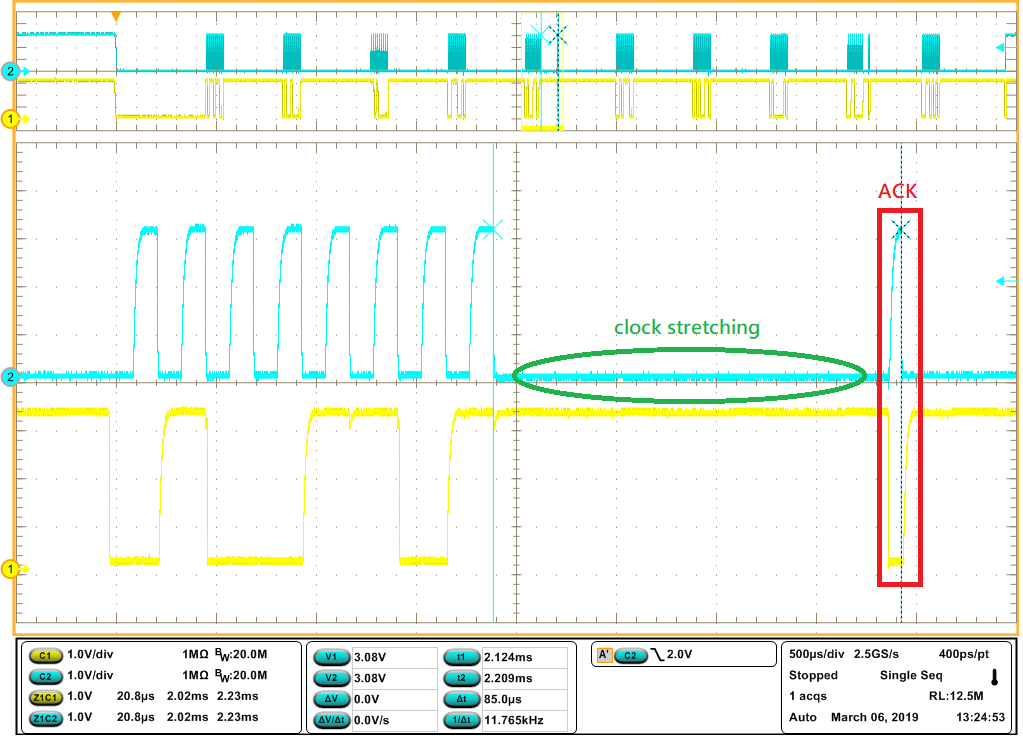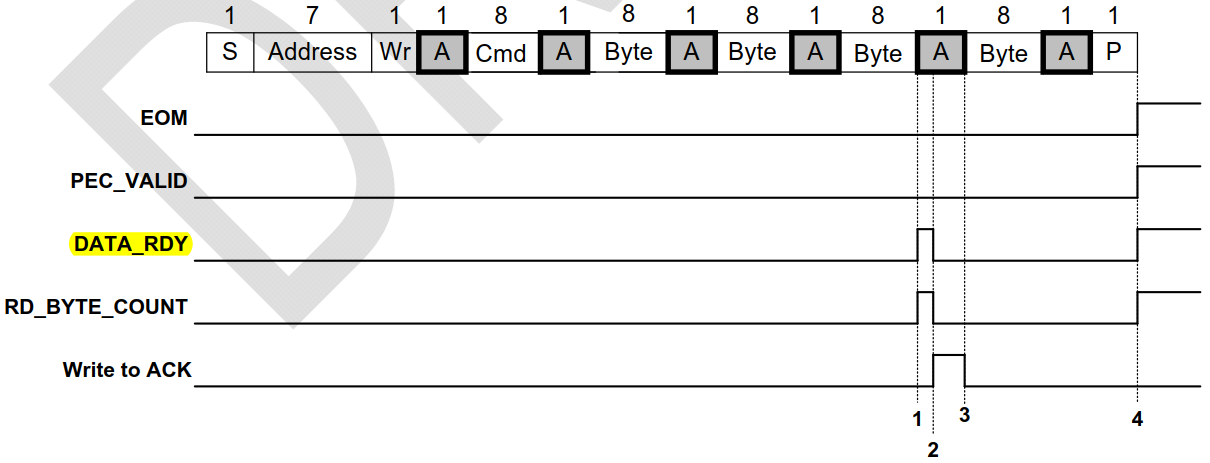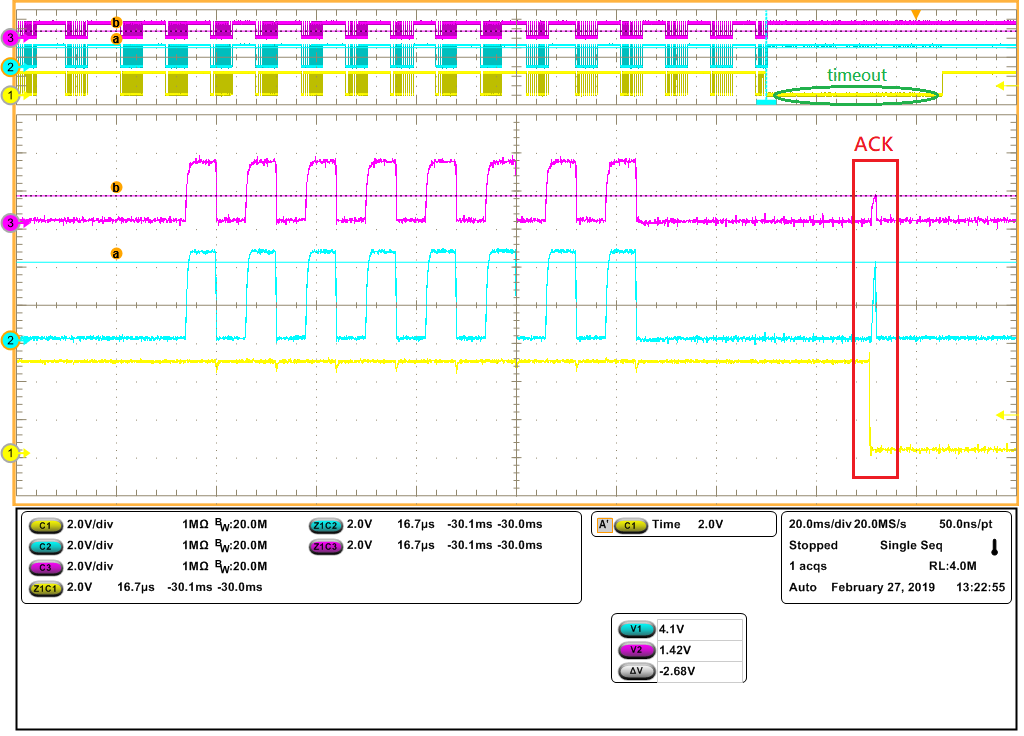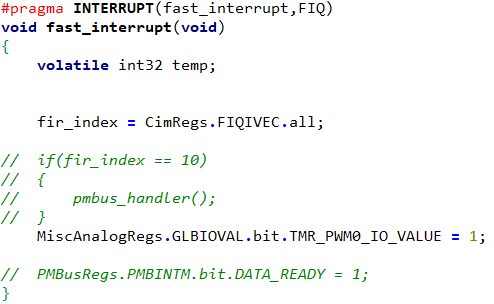Hi TI experts,
I use UCD3138 test PMBUS write with microchip pickit serial analyzer. UCD3138 is slave, microchip pickit serial analyzer is master. I found if UCD3138 pull low clock before the ACK, the ACK clock is short. This condition only happened at every 4 byte(Not including address).
please see the waveform as below,
ex: write data [S_][B6][48][D0][39][4D][2E][53][41][30][35][P_]
So I want to implement that UCD3138 don't pull low clock before the ACK, how can I do?
And I want to implement PMBUS with interrupt, how to configure the register and firmware?
Thanks!






